The Clown Killifish (Epiplatys annulatus), a vibrant and fascinating species, has captured the hearts of aquarium enthusiasts worldwide. But what makes this little fish so special? Let’s dive into its captivating world and uncover some intriguing facts.
Table of Contents
Did you know that the Clown Killifish is not just known by one name? In the aquarium trade, you might also hear it referred to as the Banded Panchax or Rocket Killifish. These monikers are a testament to its striking appearance and lively personality.
When it comes to behavior, the Clown Killifish is quite the character. As a top-dwelling species, they enjoy swimming near the surface of the water, occasionally darting down to explore the mid-level regions of their tank. Their playful nature and active swimming habits make them a joy to observe.
Interestingly, the Clown Killifish belongs to the Nothobranchiidae family, which is known for its colorful and relatively small species. Within this family, the Epiplatys genus is home to several closely related killifish species, each with its own unique charm.
In terms of diet, Clown Killifish are not picky eaters. They are omnivorous, meaning they enjoy a varied diet consisting of both plant and animal matter. Offering them a mix of high-quality flake food, frozen or live foods like brine shrimp and daphnia, and the occasional vegetable matter will keep them healthy and thriving.
Now, let’s talk about their natural habitat. Clown Killifish are native to the swampy regions and slow-moving streams of West Africa, specifically in countries like Guinea, Liberia, and Sierra Leone. In the aquarium setting, they prefer a well-planted tank with plenty of hiding spots and a gentle water flow, mimicking their natural environment.
One fun fact about Clown Killifish is their unique spawning behavior. During courtship, the male will perform an elaborate dance, flaring his fins and displaying his vibrant colors to impress the female. If successful, the female will lay her eggs among the fine-leaved plants, which the male will then fertilize.
When choosing tank mates for Clown Killifish, it’s essential to consider their peaceful temperament. They do best with other non-aggressive species of similar size, such as small tetras, rasboras, and other killifish. Avoid housing them with larger, more boisterous fish that could intimidate or outcompete them for food.
Historically, Clown Killifish were first described by the German zoologist Alfred Boulenger in 1915. Since then, they have gained popularity among aquarists who appreciate their vivid colors, active nature, and relatively easy care requirements.
In terms of size, Clown Killifish typically reach a length of about 1.5 to 2 inches (4-5 cm) in captivity. While they may be small, their presence in the tank is certainly not diminutive, thanks to their eye-catching patterns and lively personalities.
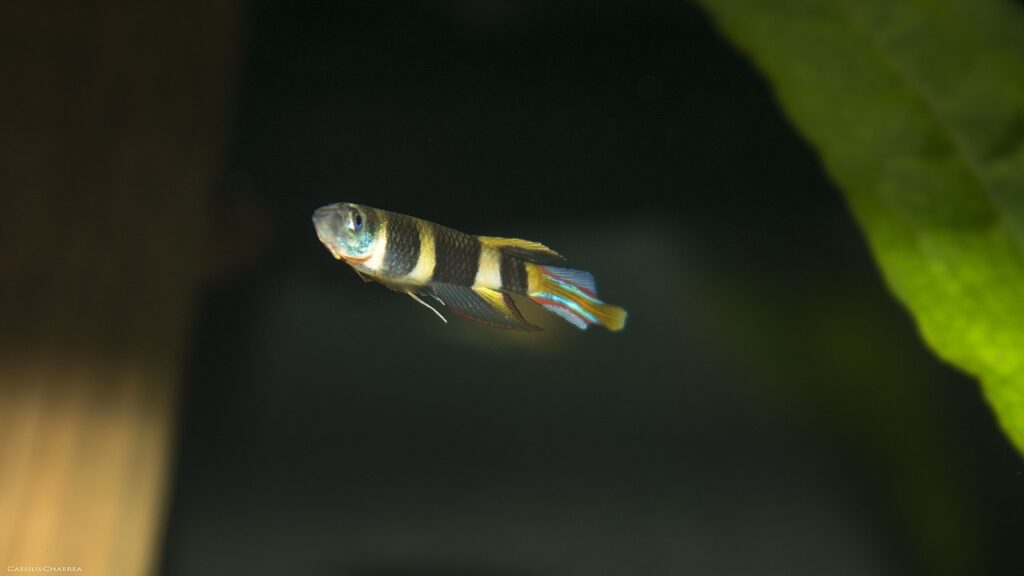
Key Information
The Clown Killifish (Epiplatys annulatus) is a striking species that captivates aquarium enthusiasts with its vibrant colors and unique patterns. Males boast a brilliant combination of red, yellow, and black bands that wrap around their bodies, resembling the appearance of a clown. Females, while less colorful, still possess an attractive silver-gray base color with subtle vertical stripes. The fins of both sexes are translucent, adding to their overall delicate and graceful appearance.
| Family | Nothobranchiidae |
| Origin | West Africa (Guinea, Liberia, Sierra Leone) |
| Price | Moderate |
| Common Names | Clown Killifish, Banded Panchax, Rocket Killifish |
| Variants | None |
| Ideal Tank Size | 10 gallons (38 liters) or larger |
| Water Parameters | Temperature: 72-79°F (22-26°C), pH: 6.0-7.5, Hardness: 5-15 dGH |
| Lifespan | 3-5 years |
| Full Size | 1.5-2 inches (4-5 cm) |
| Natural Environment | Swampy regions and slow-moving streams |
| Behavior | Peaceful, active, top-dwelling |
| Habitat Preference | Well-planted tanks with hiding spots and gentle water flow |
| Aquarium Decoration | Plenty of live plants, floating plants, driftwood, and a dark substrate |
| Ideal Tank Mates | Other peaceful, small fish such as small tetras, rasboras, and other killifish |
| Fish to Avoid | Large, aggressive, or fast-swimming fish that may outcompete or intimidate them |
| Best Foods/Diet | Omnivorous; high-quality flake food, frozen or live foods (brine shrimp, daphnia), and occasional vegetable matter |
| Disease | Prone to common freshwater fish diseases if water quality is poor or stress levels are high |
| Sex-Switch | No sex-switching observed |
| Gender Differences | Males are more colorful with distinct red, yellow, and black banding; females are silver-gray with subtle vertical stripes |
| Care Level | Easy to moderate |
| Breeding Level | Moderate; spawning occurs among fine-leaved plants, with males performing a courtship dance to attract females |
Ideal Tank Mates
When choosing tank mates for Clown Killifish (Epiplatys annulatus), it’s essential to consider their peaceful nature, size, and specific habitat requirements. Clown Killifish thrive in the company of other non-aggressive, similarly-sized species that share their preference for the upper levels of the aquarium.
Ideal tank mates should not only be compatible in terms of temperament but also have similar water parameter requirements. Clown Killifish prefer slightly acidic to neutral water with a temperature range of 72-79°F (22-26°C). They also appreciate a well-planted tank with plenty of hiding spots and a gentle water flow.
When selecting tank mates, it’s crucial to avoid larger, more aggressive species that could intimidate, outcompete, or even prey upon the relatively small Clown Killifish. Instead, opt for peaceful, community-oriented fish that will coexist harmoniously in the same aquatic environment.
Here are 15 ideal tank mates for Clown Killifish, along with explanations of why they are compatible:
1. Neon Tetras (Paracheirodon innesi)
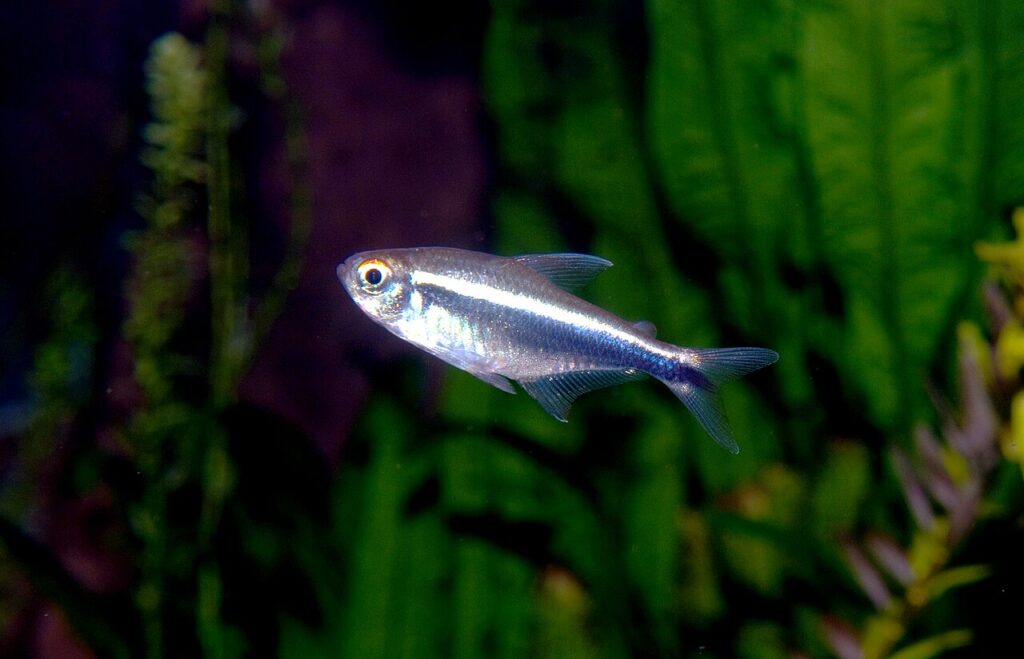
Neon Tetras are small, peaceful, and colorful fish that occupy the middle levels of the tank, making them excellent companions for Clown Killifish. They share similar water parameters and do not possess any aggressive tendencies towards other species.
2. Cardinal Tetras (Paracheirodon axelrodi)
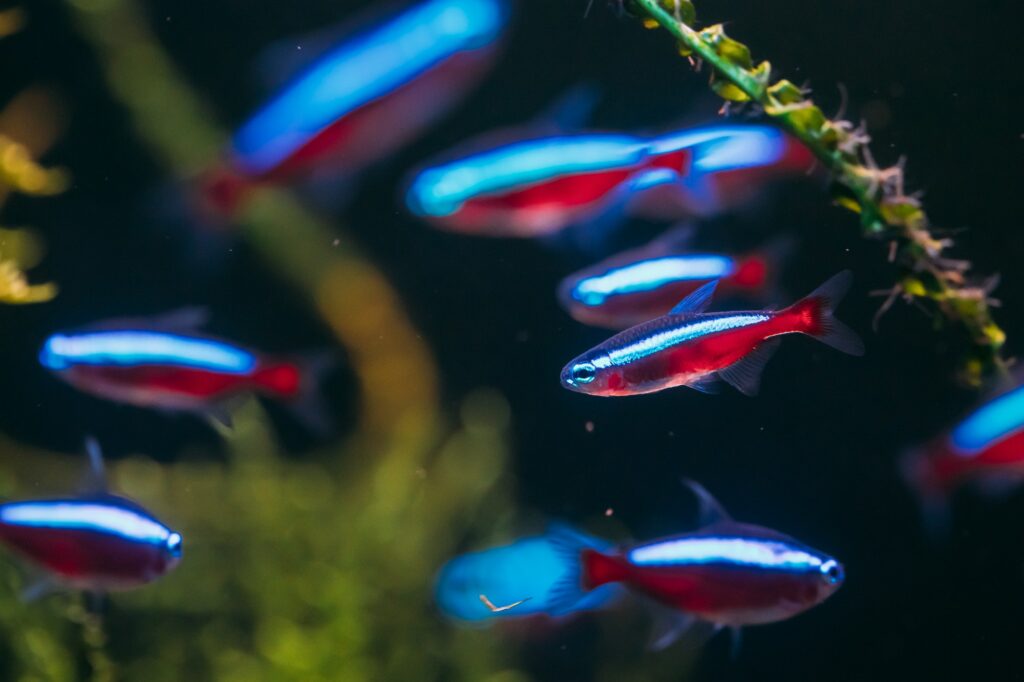
Like Neon Tetras, Cardinal Tetras are another peaceful and visually stunning species that can cohabitate well with Clown Killifish. They prefer similar water conditions and will not compete for space or food with the killifish.
3. Ember Tetras (Hyphessobrycon amandae)
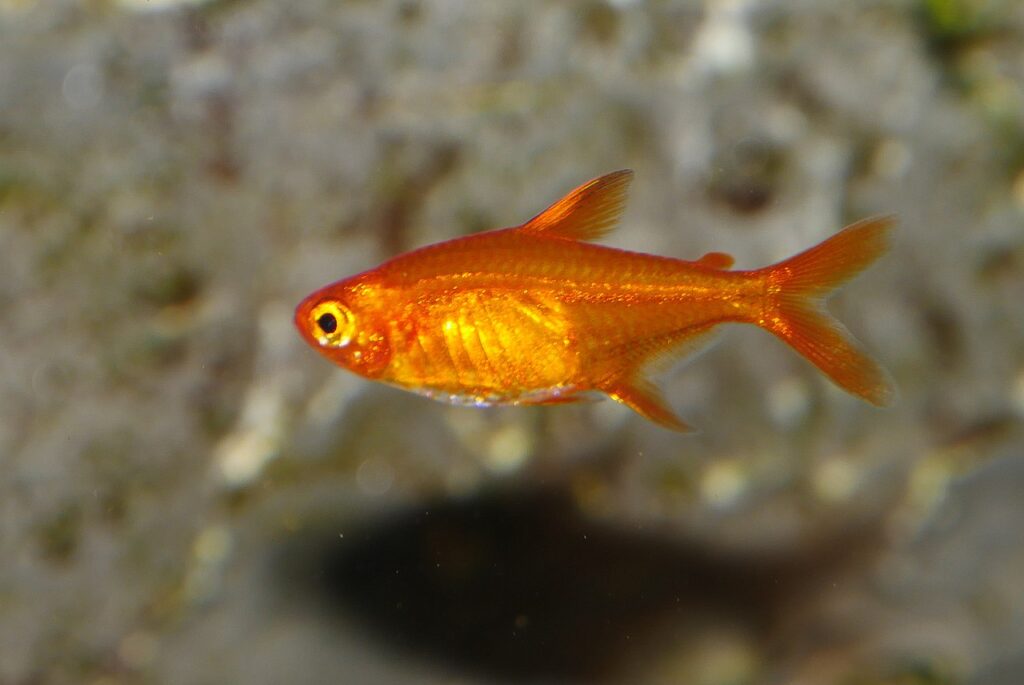
Ember Tetras are small, active, and peaceful fish that add a vibrant pop of color to the aquarium. Their size and temperament make them suitable tank mates for Clown Killifish, as they will not harass or outcompete them.
4. Harlequin Rasboras (Trigonostigma heteromorpha)
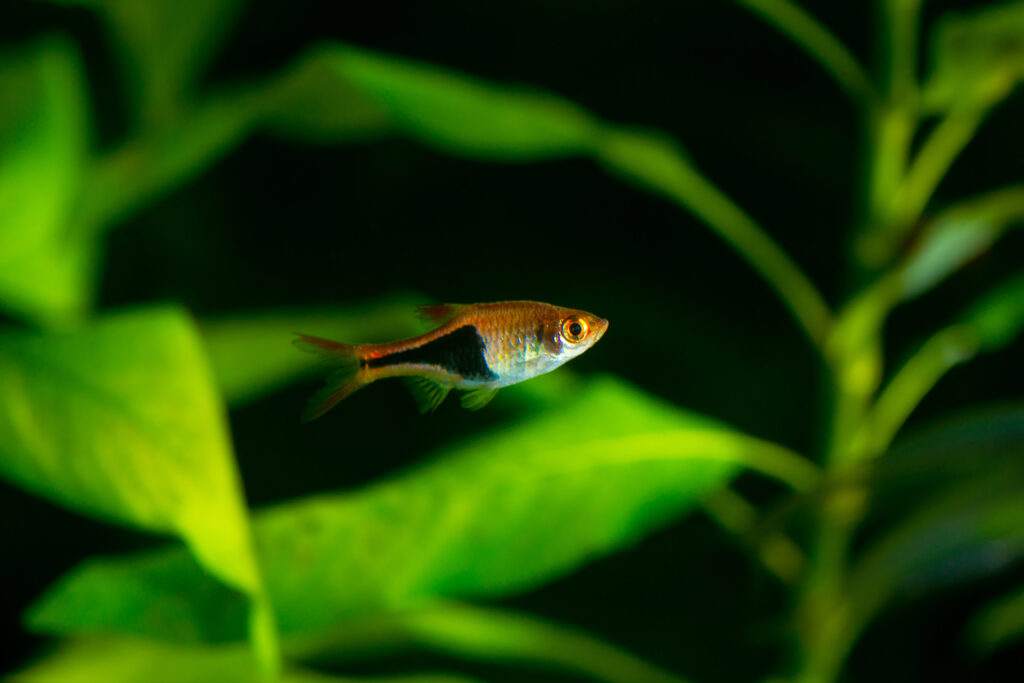
Harlequin Rasboras are a popular choice for community tanks due to their peaceful nature and adaptability. They occupy the middle to upper levels of the tank, making them compatible with the top-dwelling Clown Killifish.
5. Chili Rasboras (Boraras brigittae)
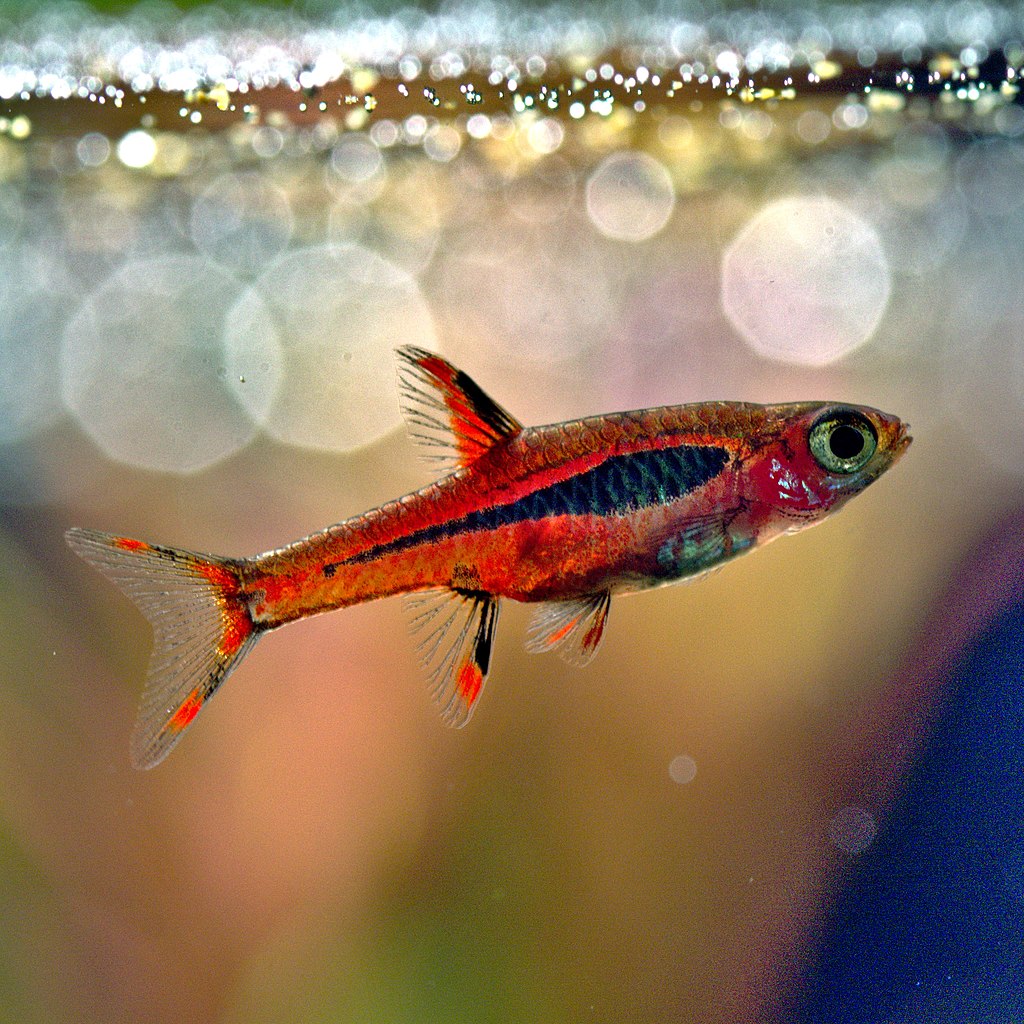
Chili Rasboras are tiny, colorful fish that are well-suited for planted tanks. Their diminutive size and peaceful temperament make them an ideal match for Clown Killifish, as they will not compete for resources or display any aggressive behavior.
6. Endler’s Livebearers (Poecilia wingei)
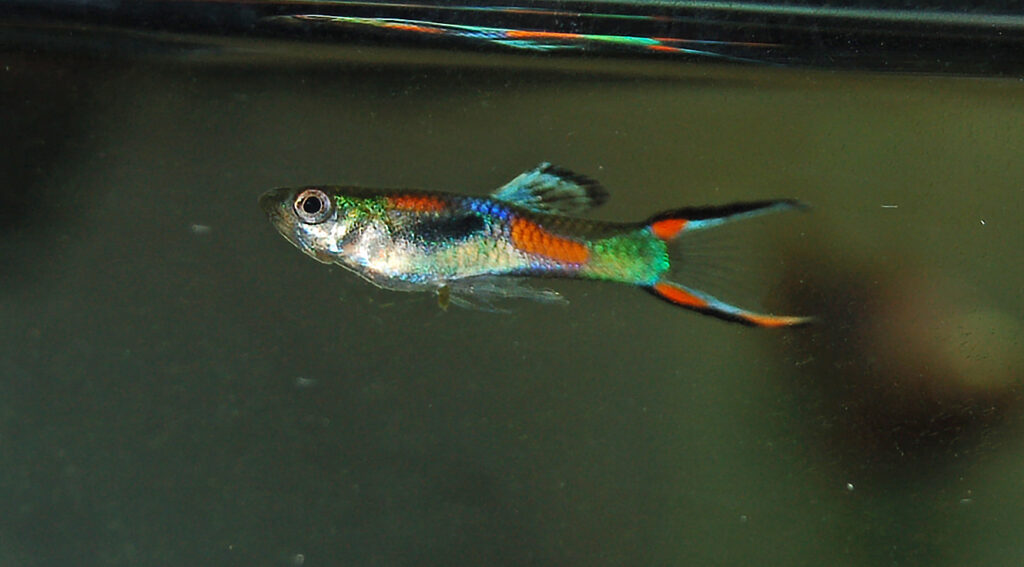
Endler’s Livebearers are small, colorful, and active fish that thrive in the upper levels of the aquarium. They are peaceful and can coexist harmoniously with Clown Killifish, sharing similar water parameters and habitat preferences.
7. Celestial Pearl Danios (Danio margaritatus)
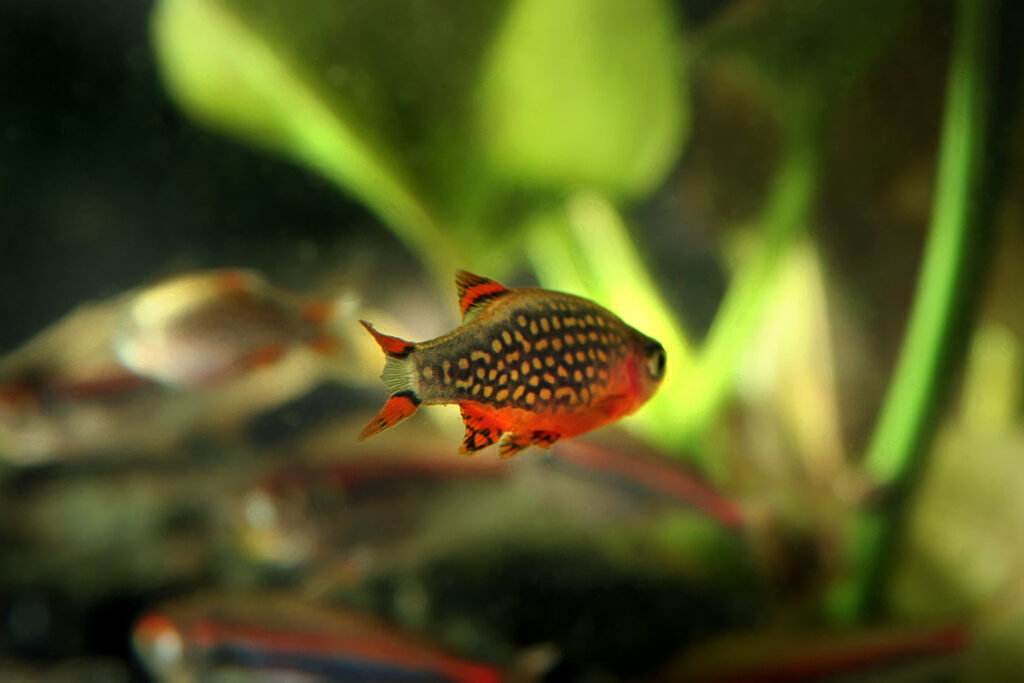
Celestial Pearl Danios, also known as Galaxy Rasboras, are small, peaceful fish with a unique spotted pattern. They occupy the middle levels of the tank and are compatible with Clown Killifish due to their non-aggressive nature and similar environmental requirements.
8. Pygmy Corydoras (Corydoras pygmaeus)
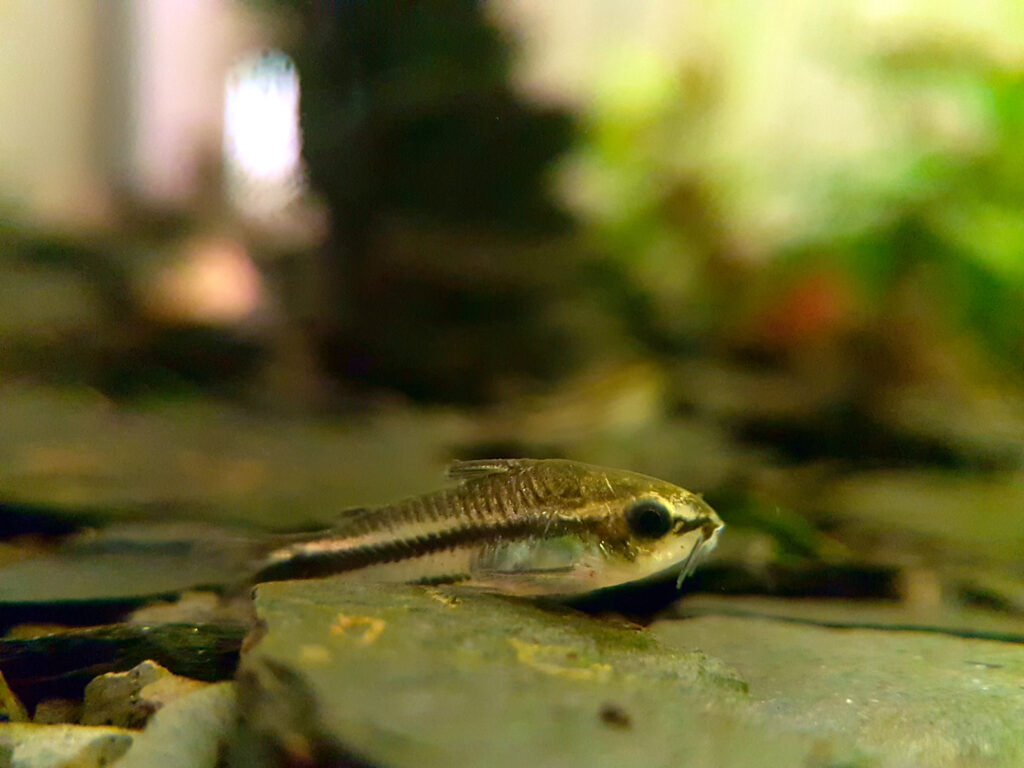
Pygmy Corydoras are tiny, peaceful bottom-dwellers that can add diversity to the tank without interfering with the Clown Killifish’s space. They are gentle scavengers that will help keep the substrate clean and are compatible with the killifish’s water parameters.
9. Otocinclus Catfish (Otocinclus vittatus)
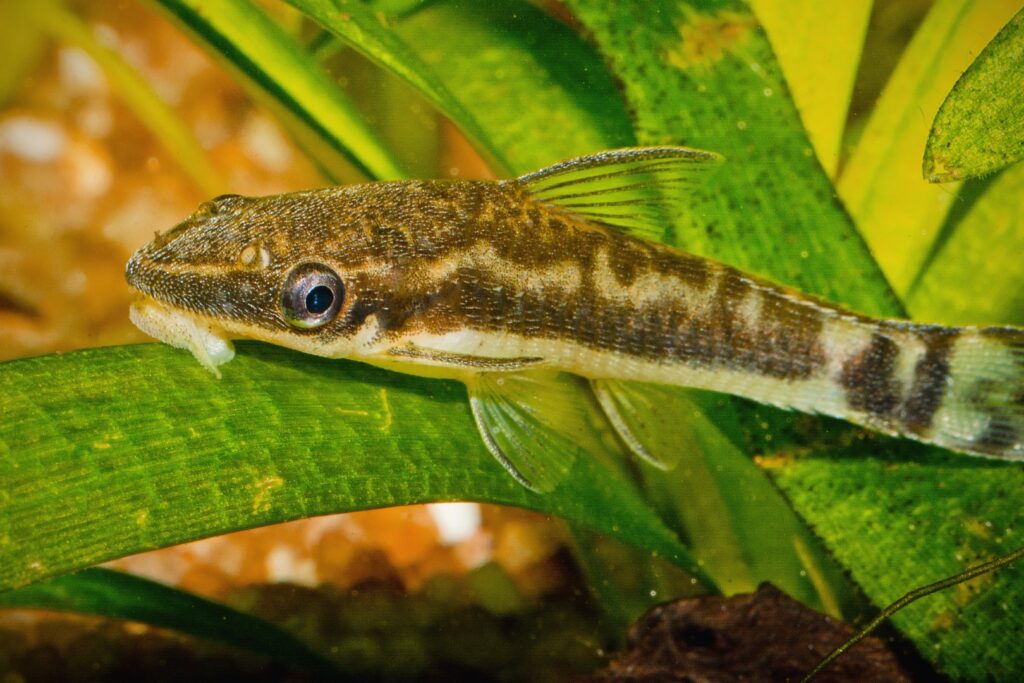
Otocinclus Catfish are small, peaceful algae-eaters that can help maintain a clean and healthy aquarium. They are non-aggressive and will not bother the Clown Killifish, making them suitable tank mates.
10. Cherry Shrimp (Neocaridina davidi)
Cherry Shrimp are small, colorful invertebrates that can add visual interest to the tank without posing any threat to Clown Killifish. They are peaceful scavengers that will help keep the aquarium clean and are compatible with the killifish’s water parameters.
11. Amano Shrimp (Caridina multidentata)
Amano Shrimp are larger than Cherry Shrimp but are still peaceful and compatible with Clown Killifish. They are excellent algae-eaters and will not disturb the killifish or compete for food.
12. Dwarf Gouramis (Trichogaster lalius)
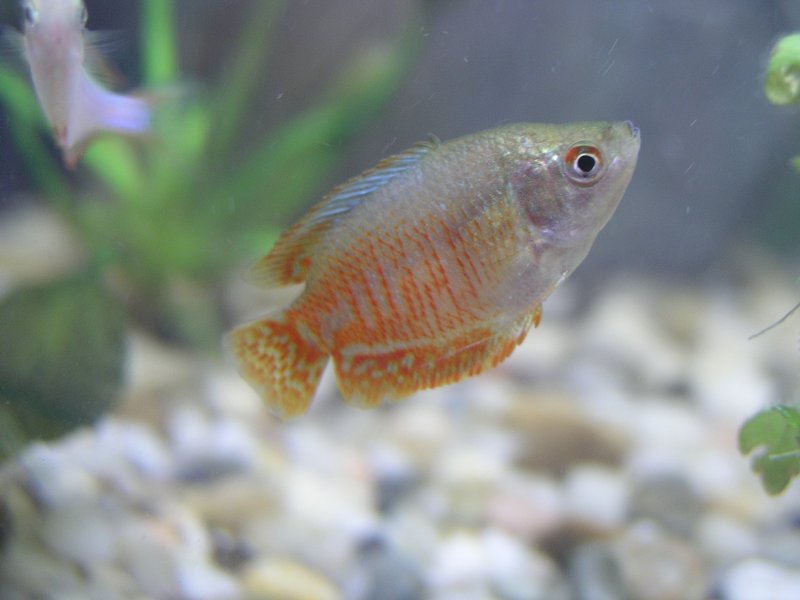
Dwarf Gouramis are relatively peaceful and colorful fish that occupy the upper levels of the tank. While they are slightly larger than Clown Killifish, they are generally non-aggressive and can coexist peacefully with the killifish in a well-maintained aquarium.
13. Honey Gouramis (Trichogaster chuna)
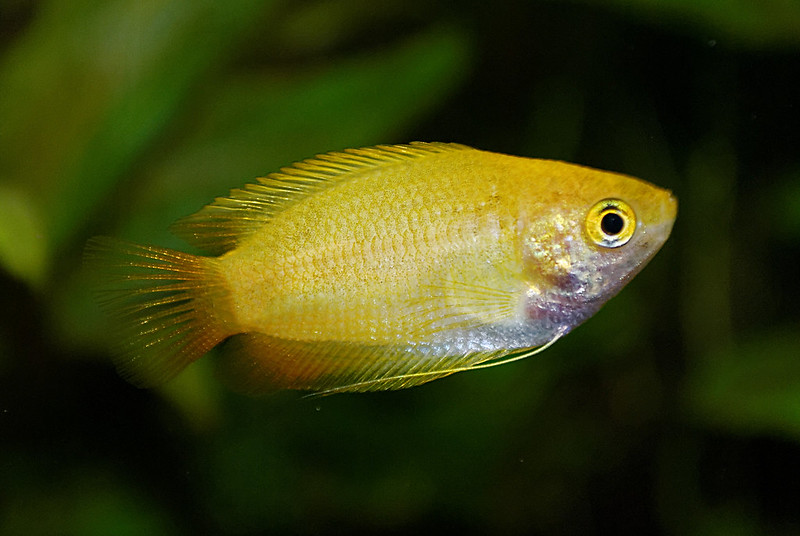
Honey Gouramis are another peaceful gourami species that can be compatible with Clown Killifish. They are smaller than Dwarf Gouramis and have a gentle disposition, making them suitable tank mates in a spacious, well-planted aquarium.
14. Kuhli Loaches (Pangio kuhlii)
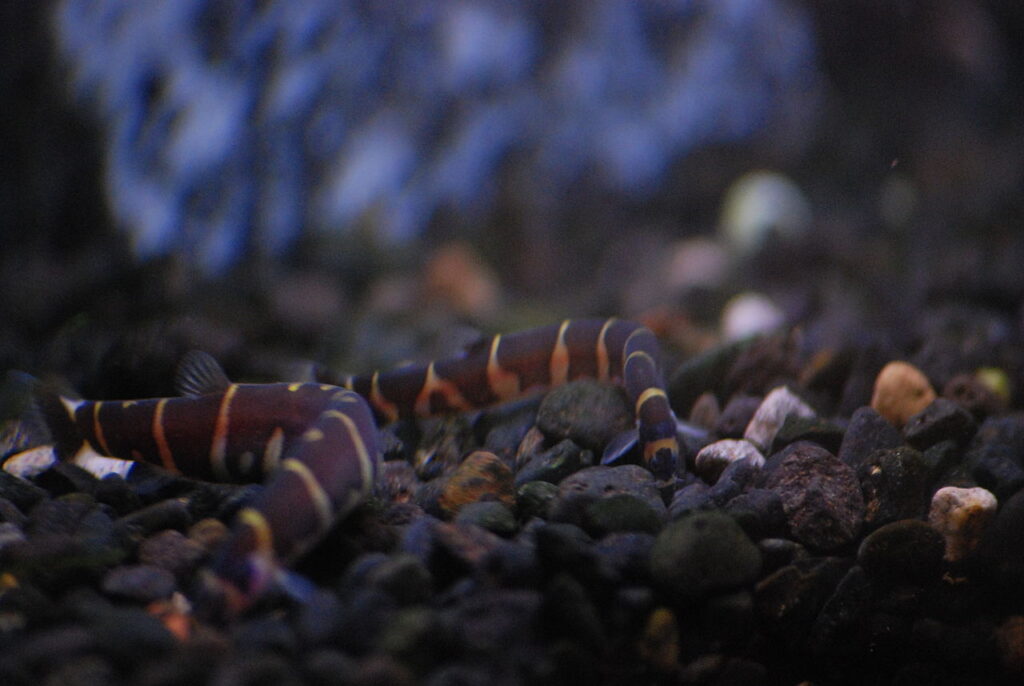
Kuhli Loaches are peaceful, eel-like bottom-dwellers that can add diversity to the tank without bothering the Clown Killifish. They are nocturnal and will help keep the substrate clean, making them compatible tank mates.
15. White Cloud Mountain Minnows (Tanichthys albonubes)
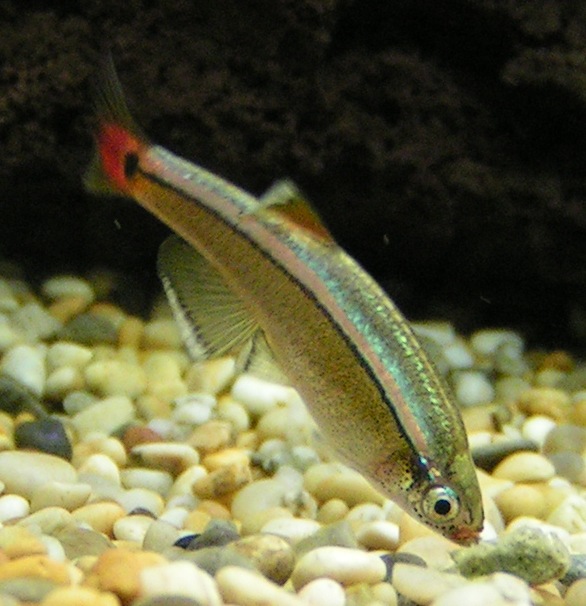
White Cloud Mountain Minnows are hardy, peaceful, and adaptable fish that can thrive in the same water conditions as Clown Killifish. They occupy the middle to upper levels of the tank and will not compete with the killifish for space or resources.
When introducing any tank mates, it’s essential to ensure that the aquarium is well-established, properly maintained, and has ample space and hiding spots for all inhabitants. Regular monitoring of water quality and fish behavior will help ensure a harmonious and thriving community tank featuring Clown Killifish and their compatible companions.
FAQs
How often should I feed my Clown Killifish?
Clown Killifish should be fed small, frequent meals throughout the day. Offer them a variety of high-quality flake food, frozen or live foods, and occasional vegetable matter. Aim to feed them two to three times a day, providing an amount that they can consume within a few minutes to avoid overfeeding and maintain good water quality.
How often should I perform water changes for my Clown Killifish tank?
Regular water changes are essential for maintaining a healthy aquarium environment. For Clown Killifish, it’s recommended to perform weekly water changes of about 25-30% of the tank volume. This helps remove accumulated waste, replenish essential minerals, and keep the water parameters stable. Be sure to use a dechlorinator when adding fresh water to the tank.
Can Clown Killifish be kept in a planted tank?
Absolutely! Clown Killifish thrive in well-planted aquariums that mimic their natural habitat. Live plants not only provide hiding spots and visual barriers but also help maintain good water quality by absorbing excess nutrients. Choose plants that prefer similar water conditions, such as Java Fern, Anubias, and Cryptocoryne species, and ensure that there is still plenty of open swimming space for the killifish.
How can I encourage breeding in Clown Killifish?
To encourage breeding in Clown Killifish, provide them with a well-maintained, heavily-planted tank with a dark substrate. Include fine-leaved plants, such as Java Moss or Riccia, which serve as spawning sites. Maintain stable water parameters and offer a varied, high-quality diet. When the fish are ready to spawn, the male will perform a courtship dance to attract the female, who will then lay her eggs among the plants for the male to fertilize.
How long do Clown Killifish eggs take to hatch?
Clown Killifish eggs typically take about 10-14 days to hatch, depending on the water temperature. The fry will initially feed on their yolk sacs and then transition to tiny live foods, such as infusoria or newly hatched brine shrimp. Provide the fry with plenty of hiding places and maintain excellent water quality to ensure their survival and growth.
Are Clown Killifish jumpers?
Yes, Clown Killifish are known for their jumping ability. As top-dwelling fish, they may occasionally jump out of the water, especially if startled or stressed. To prevent accidental escapes, ensure that your aquarium has a tight-fitting lid or cover. You can also consider lowering the water level slightly to provide more space between the water surface and the tank lid.
Can Clown Killifish be kept in a species-only tank?
While Clown Killifish are typically kept in community tanks with peaceful tankmates, they can also thrive in species-only setups. A species-only tank allows you to focus on providing the ideal conditions for Clown Killifish and observe their natural behaviors more closely. In this type of setup, ensure that the tank is well-planted, has ample swimming space, and includes both males and females to encourage natural interactions and potential breeding.